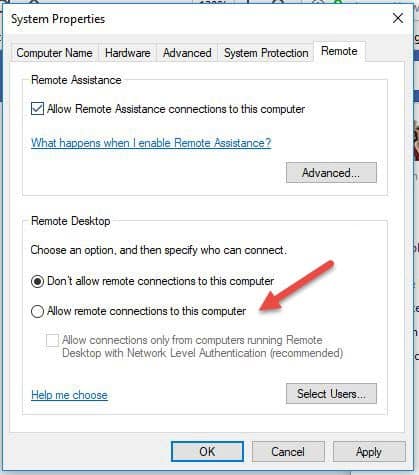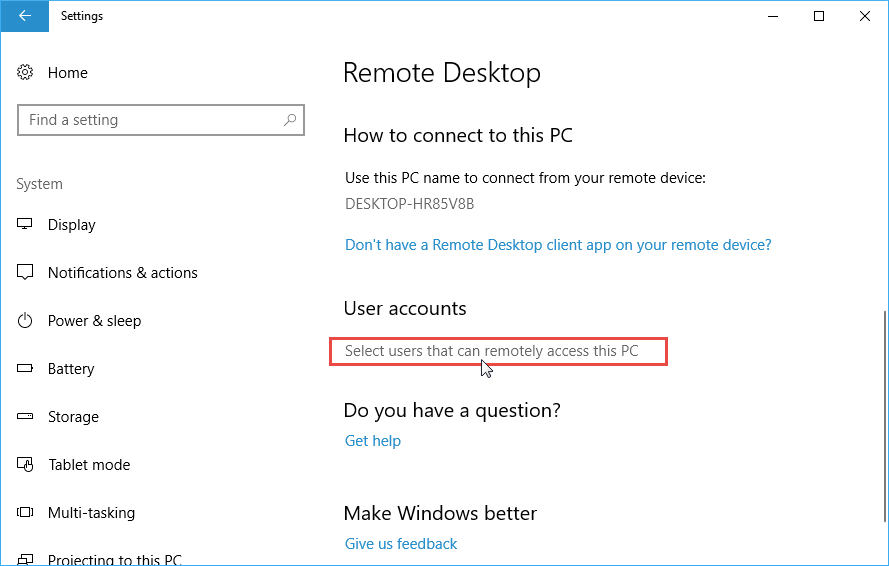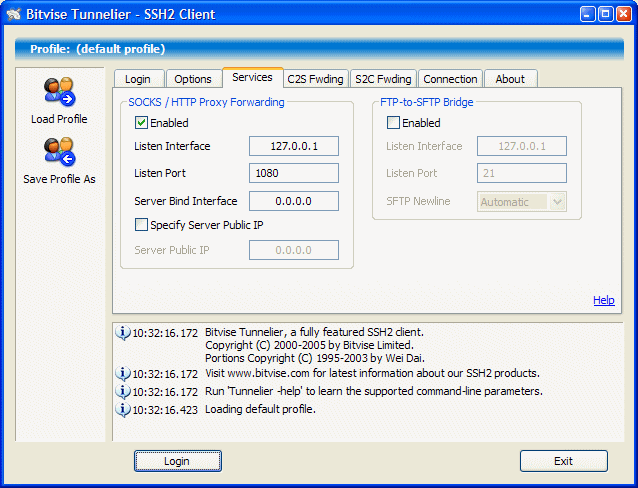

- WINDOWS REMOTE DESKTOP CLIENT WITH SSH TUNNEL SOFTWARE
- WINDOWS REMOTE DESKTOP CLIENT WITH SSH TUNNEL WINDOWS
Many times during development on k8s you need to port-forward some of the pods services for local development and/or tests. Example scenario: kubernetes service exporter

Rospo tunnel are monitored and keeped up in the event of network issues. Rospo will generate server identity file on first run and uses standard authorized_keys and user known_hosts files. Tunnels are fully secured using standard ssh mechanisms.

Insert the ssh server dns name or ip address in field Hostname (or IP address).

open a socket on the local machine listening on port 9999 that forwards all the traffic to the service listening on port 9999 on the remote_server_address machine Remote desktop service on desktop C inside DESY network SSH Tunnel Configuration Start the ssh client program PuTTY on desktop A.open a socket on the local machine listening on port 8000 that forwards all the traffic to the service listening on port 8000 on the remote_server_address machine.
WINDOWS REMOTE DESKTOP CLIENT WITH SSH TUNNEL WINDOWS
Accessing Remote Desktop over the SSH Client offers the following advantages: Outside of a domain environment, the Windows Remote Desktop client cannot itself verify the authenticity of the server to which it is connecting. I'd also like to have as few steps in this process as possible as my users aren't typically the most technical bunch.What's happens here is that rospo will connect to remote_server_address through the jumphost_address server and will: The SSH Client will setup all the settings and launch the Windows Remote Desktop client for you. This problem can be further exacerbated when there's, , etc each with a similar number of systems behind the NAT. For the trivial case of three, this is a non-issue, but when the number of systems is large it becomes a problem. Then my user will need to know what port their local machine is listening on, and that's what I'm trying to avoid. The problem arises when they want to connect to both remoteHost_number_1 and remoteHost_number_2 at the same time. When the user connects in VNC, all they need to know is to connect to localhost. Ssh -l username -L 5900:remoteHost_number_3:5900 Ssh -l username -L 5900:remoteHost_number_2:5900 Bitvise SSH Client offers features included: FTP to SFTP.
WINDOWS REMOTE DESKTOP CLIENT WITH SSH TUNNEL SOFTWARE
The problem is that my users sometimes need to VNC into multiple machines at once, creating standard profiles like that messes up this solution (e.g., what local port to use without having the user know what to connect to in the VNCViewer software).įor instance, if I save sessions that are of the form (using the ssh cli-style commands): ssh -l username -L 5900:remoteHost_number_1:5900 Bitvise SSH Client for PC is an application or tool for secure remote access software developed by Bitvise Limited for Windows. The goal is that I could give this software to someone else and they'd have a list of machine names they could click on and start using VNC though (they'd be prompted for authentication credentials, but that should be about it).ĭoes a software like this exist, or am I going to need to throw together some C# foo? That is, the software would take care of creating the SSH tunnel and opening the VNC viewer. I would like a GUI program that would let me set up, in advance, connections to machines and just click to connect to them. While I have no problems tunneling my VNC connections through that SSH server running on the gateway, lately I've been needing to let other people have access to those machines too. I tend to log into a lot of remote sites, and typically the setup we have is: the gateway is running OpenWRT with an SSH server, there are client machines behind the NAT running UltraVNC.


 0 kommentar(er)
0 kommentar(er)
